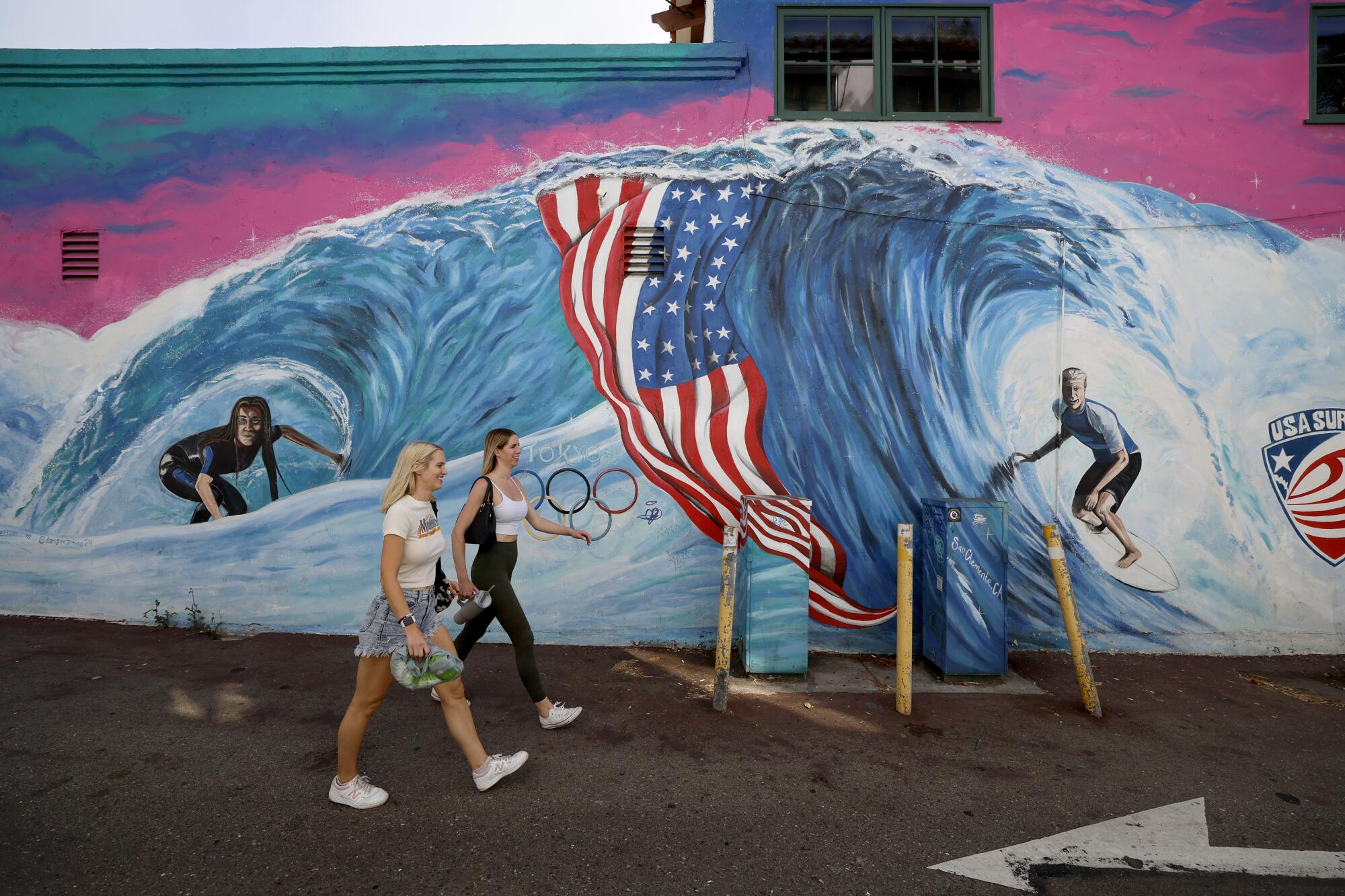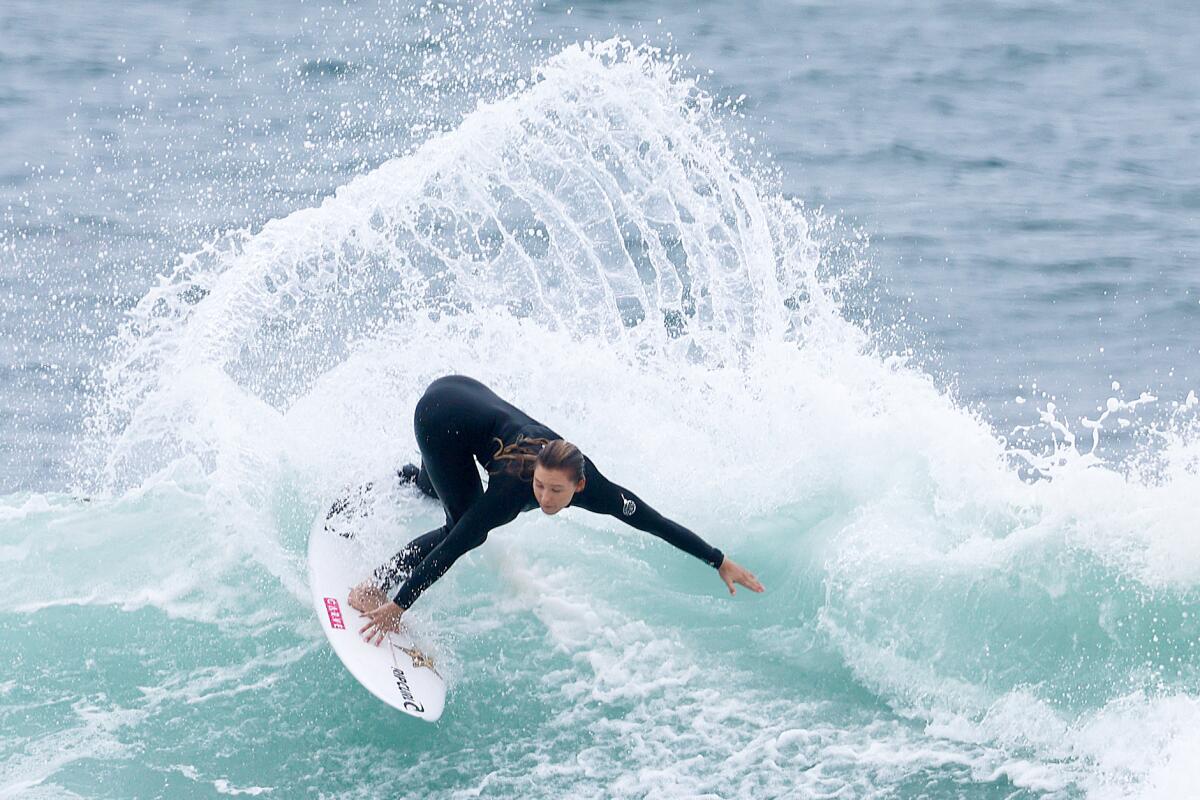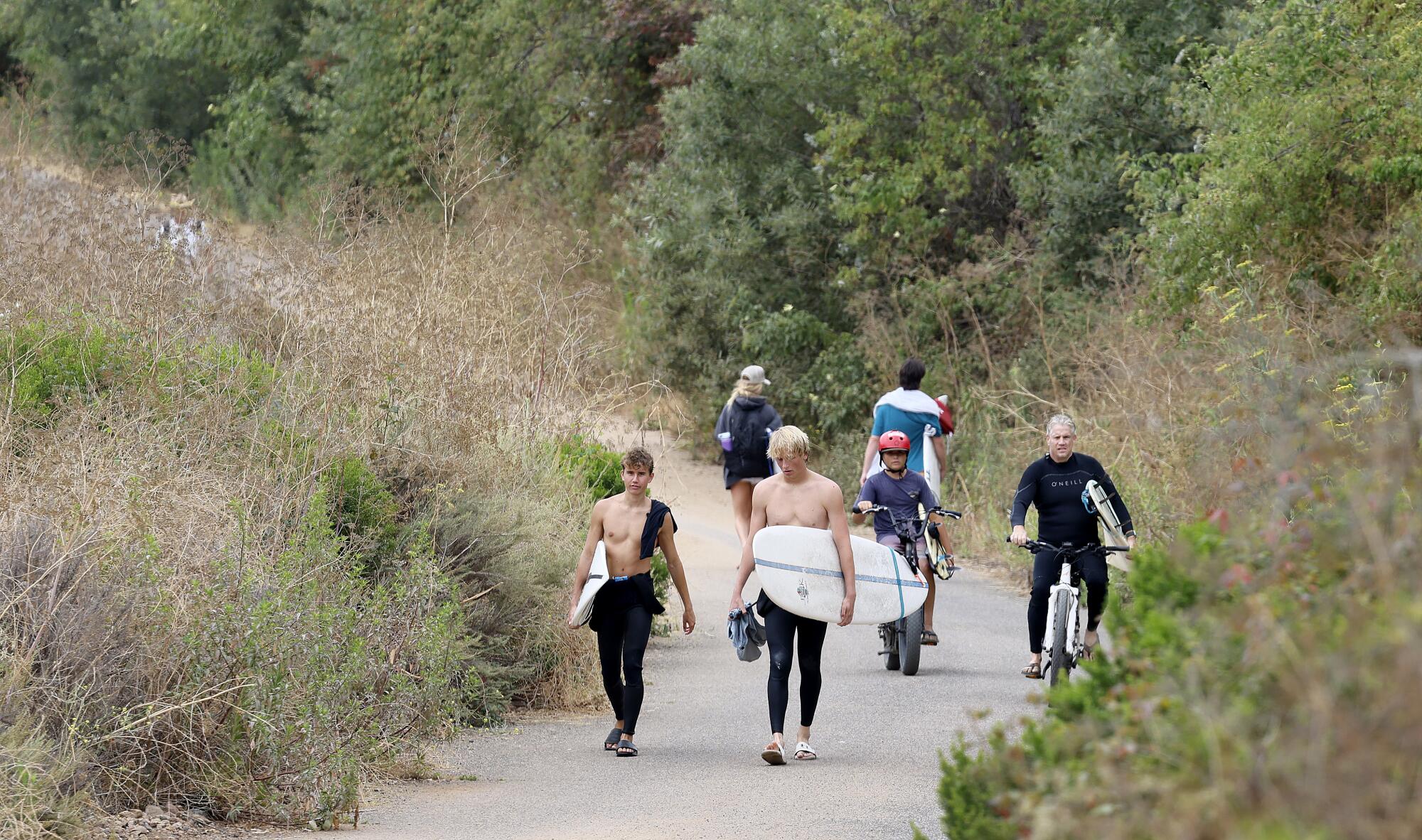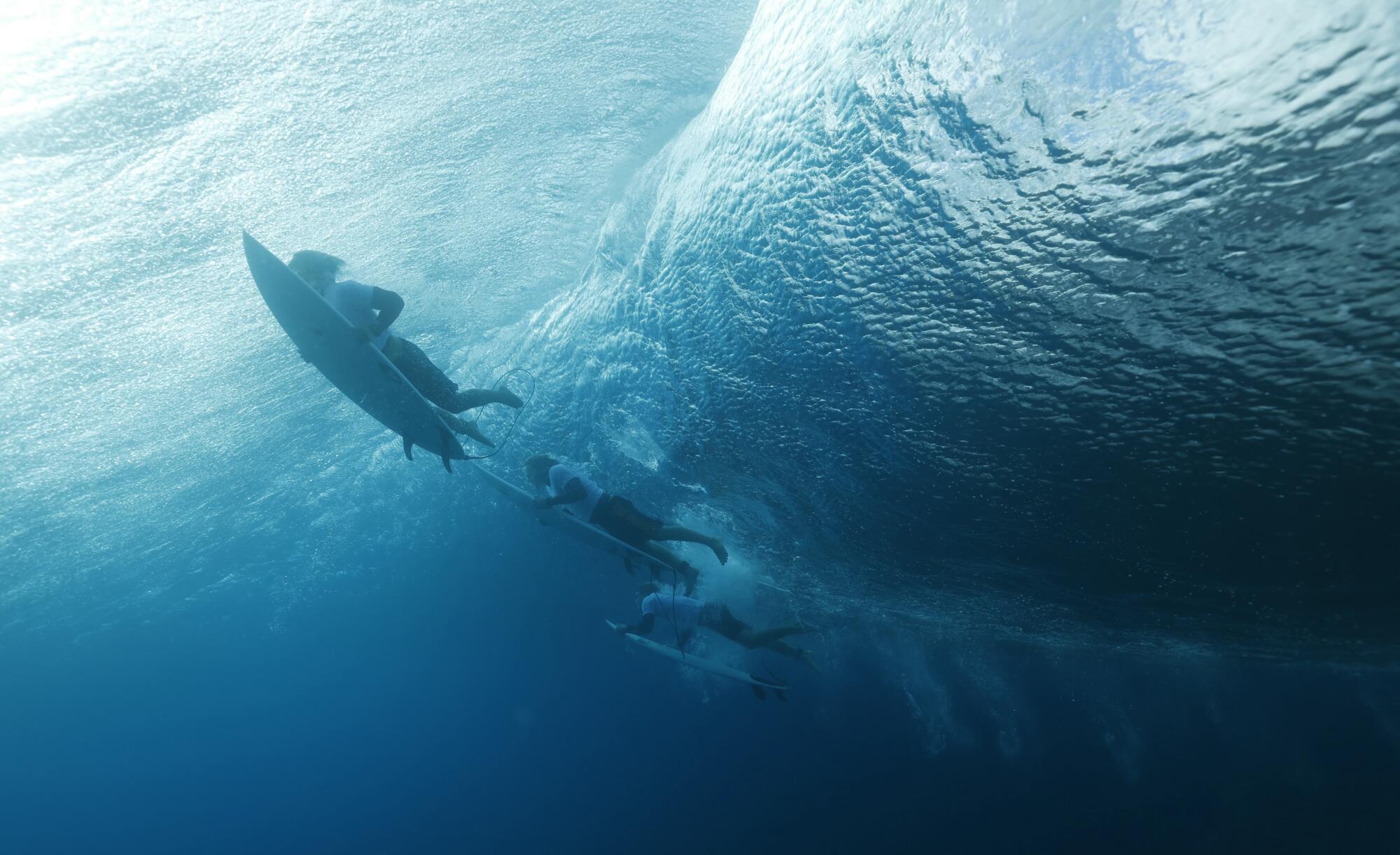The world’s “heaviest wave” is born near the South Pole, where fierce storms pound the ocean’s surface like angry fists, sending pulses of energy racing north, unimpeded, for thousands of miles.
That force is all but invisible until it suddenly rides up a steep, smooth ramp on the ocean floor, curls into a spectacular barrel — more like a slab of concrete than water — and slams, with astonishing fury, into a razor-sharp coral reef on the southern tip of Tahiti.
Locals call the wave Teahupo’o, which loosely translates to “wall of skulls.” It has fascinated and terrified the world’s elite ocean athletes since it was first surfed in the 1980s.
In the coming days, Teahupo’o (pronounced “cho-poo”), just offshore of its namesake fishing village on the island’s lush coast, will become the site of the second Olympic surfing tournament. Holding the event nearly 10,000 miles from the epicenter of the Summer Games in Paris is a bold choice that has some safety-conscious experts shaking their heads and ghoulish spectators licking their chops.

Tatiana Weston-Webb, surfing for Brazil’s Olympic team, does a training run off the coast of Tahiti.
(Ben Thouard / Associated Press)
Anyone who times their ride wrong, takes off in anything but the perfect spot or fails to paddle hard enough to match the speed of the wave, runs the risk of getting pounded into the coral reef below by all that rushing water: Imagine being shoved across a cheese grater by a steam roller.
At least five surfers have been killed on Teahupo’o; countless others have suffered broken bones and shredded flesh.
There have already been some spectacular wipeouts in Olympic warm-up sessions, but so far no serious injuries.
“It’s amazing just to see what this world can make, what the ocean is capable of,” said Crosby Colapinto, 23, a professional surfer from San Clemente who has competed at Teahupo’o. “It was so big when we did it, so scary,” he said last week, surveying the much gentler swell at his home beach. “It’s a wave that can mess you up pretty bad.”

A mural in San Clemente celebrates U.S. Olympic surfers Caroline Marks, left, who is competing in the Paris Games, and Kolohe Andino, who competed in the Tokyo Olympics in 2021.
(Allen J. Schaben / Los Angeles Times)
Colapinto’s older brother, Griffin, is among the five U.S. surfers competing in the Paris Games. He and team member Caroline Marks live in San Clemente. A third member, Caitlin Simmers, lives just down the road in Oceanside — making the storied stretches of sand on either side of Camp Pendleton the cradle of America’s hopes for surfing glory this year.
San Clemente has long been at the center of competitive surf culture. Home to USA Surfing, the national governing body for the sport, Surfer Magazine and countless gear manufacturers, the quiet Orange County town drenched in sunshine and dotted with red-tile roofs pumps out world-class surfers the way Lake Tahoe and Mammoth produce elite skiers.
Much of that is due to the spectacular point break at Lower Trestles, or “Lowers,” which produces magnificent chest-to-head-high waves that break both ways, left and right, all summer long.
They’re ideal for practicing the flashy technical moves — slashing cutbacks, jaw-dropping aerials — that impress judges and help surfers rack up points in competitions that are scored much like gymnastics or figure skating.
1

2

3

1. A surfer performs a backside turn at Lower Trestles offshore of San Clemente. 2. A surfer does a slashing turn on a wave at Lower Trestles. 3. A surfer goes airborne at Lower Trestles. (Allen J. Schaben / Los Angeles Times)
But when San Clemente surfers get to Teahupo’o, many of those hard-won skills will go out the window.
“If Lowers is figure skating, Teahupo’o is hockey,” said Surfer Magazine editor-in-chief Jake Howard.
Local surf coach Lucas Taub, who was standing on the beach with a telescope last week, scoring the rides of his students on waves about a hundred yards from shore, took it a step further.
“The type of surfing you’re going to see at Teahupo’o is pretty much the opposite of what you’re going to see here,” Taub said. “Here, it’s about high-performance moves,” strung together with speed and grace. “Over there, it’s kind of like life or death.”

“Here, it’s about high-performance moves. Over there, it’s kind of like life or death,” says surf instructor Lucas Taub, comparing surfing conditions in San Clemente and Teahupo’o.
(Allen J. Schaben / Los Angeles Times)
Incorporating surfing into the Olympics has been a dream more than a century in the making. Duke Kahanamoku, the legendary Hawaiian athlete who won five Olympic medals as a swimmer from 1912 through 1924, was one of the first and most passionate proponents of introducing his true love — surfing — to the Games.
But there has been fierce resistance along the way, particularly from some fellow surfers who think the whole idea of turning an intimate, almost zen-like communion with nature into a competition is sacrilege.
Then there are the logistical problems: The ocean is fickle. Peter Neushul, co-author of “The World in the Curl: An Unconventional History of Surfing,” tells the story of how one of the big TV networks showed up decades ago on the north shore of Oahu with lots of expensive equipment, ready to broadcast a competition at Pipeline, another heavy wave that explodes just off the beach in easy camera range.
If Lowers is figure skating, Teahupo’o is hockey
But on the appointed weekend, the waves never materialized.
So all the TV big shots were stuck sitting there, “daiquiris in hand, but nothing to televise,” Neushul said. “The networks just couldn’t operate like that,” so surfing struggled to reach the mainstream.
But these days, many of the traditional Olympic sports are beginning to feel passe to a younger generation. (When was the last time you went artistic swimming with your buddies, or the kids tossed a shot put around the backyard?) So organizers have been searching for ways to make the Games more relevant by including sports that many people do for fun.

Surfers walk the path to Lower Trestles in San Clemente.
(Allen J. Schaben / Los Angeles Times)
This year, mountain biking, sport climbing and surfing are all Olympic sports, the latter two for only the second time.
Surfing’s debut came in the Tokyo Olympics in 2021. The competition was held at the closest reliable surf break to the city, Shidashita Beach. Situated on the east coast of Japan, ”Shida” as it’s known, suffers from the same problem afflicting East Coast beaches in the U.S. — generally small and uninspiring surf.
Waves are created by wind, and global winds generally blow toward west-facing beaches, pushing big waves onto them.
So there was real concern in the international surfing community that the Tokyo tournament could be a bust, conjuring comparisons to a memorable competition in New Jersey where organizers raced boats up and down the shoreline, hoping to create a tiny wake for the competitors to ride, said Peter Westwick, a USC historian and co-author of “The World in the Curl.”
But luck was on the Tokyo organizers’ side. The waves arrived, and the competition went well, favoring the more technical riders.

Surfers take part in a training day in Teahupo’o, Tahiti, ahead of the Paris Games.
(Ben Thouard / Associated Press)
French organizers are taking a dramatically different approach. Instead of holding the competition on one of their many west-facing Atlantic Ocean beaches in Europe, they decided to go to French Polynesia, where the promise of a breathtaking competition awaits.
Unlike the sports with fixed dates, the surfing competition is set to run for four days between July 27 and Aug. 5, whenever conditions look most promising.
If Teahupo’o cooperates, the result will be “incredible eye candy” for viewers at home, Neushul said.
Most of the competitors will have some experience at Teahupo’o. It’s a regular stop on the professional World Surf League circuit. But locals who surf there all the time, and Americans such as John John Florence, who grew up surfing huge waves at Pipeline, should have a distinct advantage, Neushul said.


Above: U.S. Olympic surf team member Caroline Marks, center, gets a hug from a supporter during a surprise send-off celebration in San Clemente. Below: Jake Howard, left, editor-in-chief of Surfer Magazine, shakes hands with U.S. Olympic surfer Griffin Colapinto.
(Allen J. Schaben / Los Angeles Times)
The risk is that the wave will get too big for some of the less-experienced competitors to handle safely. At that point, instead of being a showcase for technical ability, it will be a competition to see who has the steely nerves and precise timing required to launch themselves down the steep drop into the barrel and come out the other side alive.
“I would hate to see someone get their head bashed in on the reef,” because they were afraid to admit the wave was too big for them, Neushul said.
During a brief interview last week at his farewell party in San Clemente, before boarding the plane for Tahiti, Griffin Colapinto agreed the competition ahead could “be super dangerous” for some people.
“If it’s big,” he said, “you’re just going to have to put it all on the line.”




